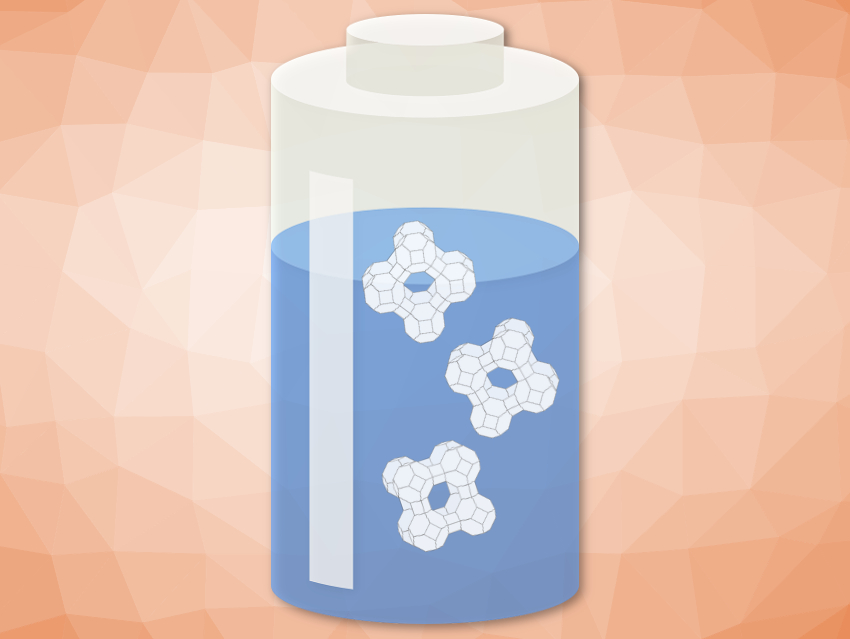Sodium-ion batteries could be a promising alternative to lithium-ion batteries (LIBs). They are generally cheaper and more sustainable than LIBs because they use earth-abundant elements. However, their commercial use still requires the development of suitable electrode materials and electrolytes, as well as additives that prevent the decomposition of the electrolyte and capture byproducts such as water and HF.
Emma Kendrick, University of Birmingham, UK, and colleagues have used commercially available ZSM-5 nanozeolite particles as a low-cost electrolyte additive for sodium-ion batteries. The nanozeolite was dispersed in a standard electrolyte consisting of NaPF6 in a mixture of ethylene carbonate (EC) and diethyl carbonate (DEC). The electrolyte was used in a sodium-ion cell and its properties were compared with analogous cells containing either no additive or the “traditional” organic additive fluoroethylene carbonate (FEC).
The team found that capacity retention after 480 cycles improves from 40 % without an additive and 58 % with FEC to 62 % with the nanozeolite additive. The team investigated the electrode surface after use and observed that the nanozeolite additive provides a stable solid electrolyte interface (SEI) layer, while FEC causes an accumulation of NaF flakes on the electrode. According to the researchers, the positive effect of the zeolite is due to its ability to trap byproducts of electrolyte decomposition, such as water, CO2, and HF, and prevent the deposition of NaF.
- Nanozeolite ZSM-5 electrolyte additive for long life sodium-ion batteries,
Lin Chen, Brij Kishore, Marc Walker, Claire Dancer, Emma Kendrick,
Chem. Commun. 2020.
https://doi.org/10.1039/d0cc03976d


